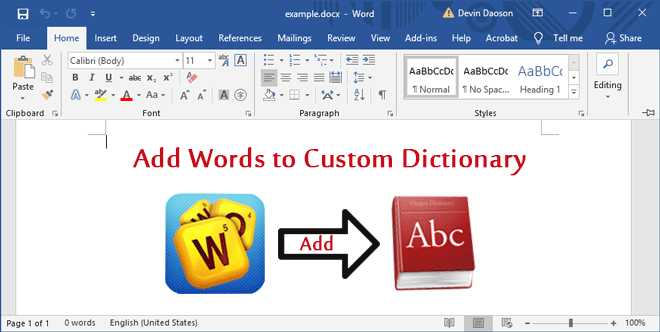

You can disable annoying repeated words in Word, when done click OK to return to editing the document. To do this, select File> Proofing, here you can see a list of the indexes that Spelling Checker ignores. For some conditions, such as email addresses, URLs or content containing numbers, you can decide whether Spelling Checker can check them or not. Identify things Spelling Checker checksĭepending on the type of work you do, you may discover that Word finds errors in places that do not exist, or do not catch errors when you do. In the future, if you use Spelling Check in a document, Word will mark it as a mistake. Click Edit Word List to open the CUSTOM.DIC dialog box, including a list of words you added to the Word dictionary, click and then select Delete> Close. To do so, select File> Options> Proofing and click Custom Dictionaries, select the default dictionary in the list, usually CUSTOM.DIC file. If you add a misspelled word in the dictionary by accident, Word will not identify it as a misspelled error until you remove it. Remove the spelling errors in Spelling Checker Word automatically sorts items into alphabetical order when using files. Type or paste your words, each from each line into the document and then save. Then, start the text editor like Notepad or WordPad, use it to open the CUSTOM.DIC file. First, in the Custom Dictionaries dialog box, enter the file path ofUSTOM.DIC. Adding a tilde in front of the first character and removing all the other ones from the word tells InDesign “Don’t hyphenate this word, ever.This is easy for a few words, but if you have a long list of added words, it’s best to edit the dictionary itself. If you want to customize the breakpoints, go ahead and insert or remove tildes as you deem fit, following the rule of one tilde = preferred, more tildes = okay to break here if the preferred location doesn’t work.

If that’s all you want to know, you can click the Done button and be on your way. One tilde (~) is the preferred location, two tildes indicates a less satisfactory alternate breakpoint, and three tildes indicates InDesign’s last choice. When the word is in the field, click the Hyphenation button to reveal the breakpoints the dictionary knows about. (If you select a word in your document before choosing the command, the word is automatically entered in the field.) (If you do this a lot you might want to assign a custom keyboard shortcut to the command.) When you choose Dictionary…, a dialog box opens that lets you enter the word for which you’d like to check spelling or hyphenation points.
#Where is custom dictionary in word 2010 how to#
That is, in a multisyllabic word, between which two syllables does InDesign’s dictionary prefer to hyphenate it when it must, and where are the other possible breakpoints in the word that the dictionary will consider? He’d been looking for an hour in InDesign and couldn’t figure out how to reveal this information.Īctually, the feature is only a little bit hidden in InDesign, in the Edit > Spelling > Dictionary… command.

As an InDesign user lamented in a recent post on a forum, there’s no keyboard shortcut (a la Ventura Publisher) or dedicated menu command (a la QuarkXPress) to see the possible hyphenation points in a word.


 0 kommentar(er)
0 kommentar(er)
